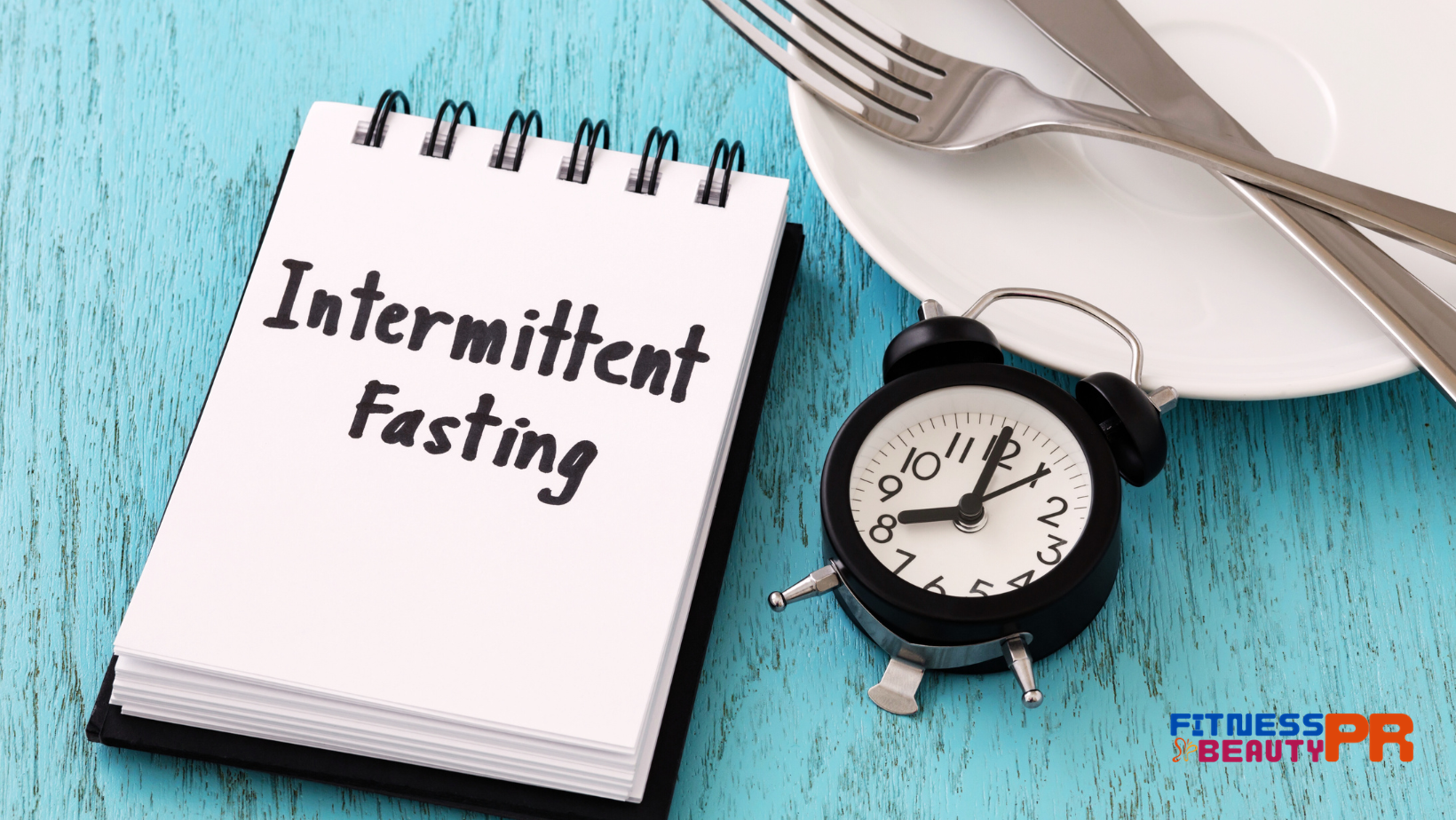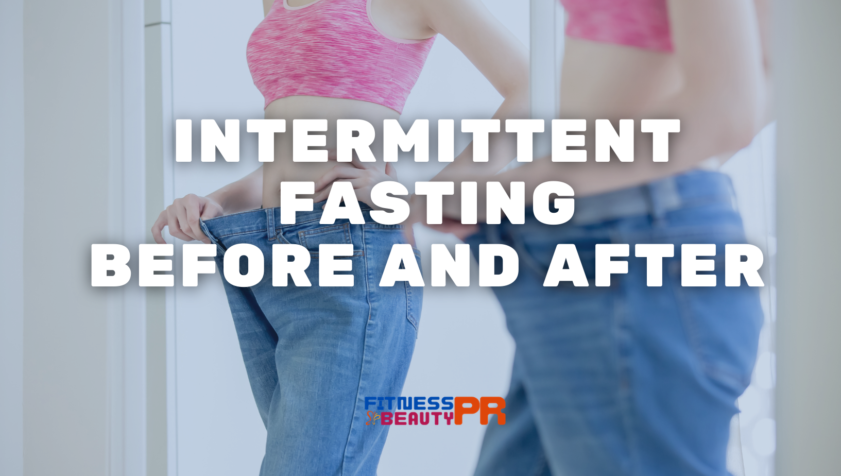Are you curious about real-world intermittent fasting results? This article offers a glimpse into ‘intermittent fasting before and after’ experiences, from the transformative weight loss journeys to unexpected health benefits. With an insight into the lives of those who’ve embraced this lifestyle change, we aim to provide a clear and unembellished perspective of what intermittent fasting could look like for you.
Key Takeaways
-
Intermittent fasting focuses on when you eat and can lead to significant weight loss (0.55 to 1.65 pounds per week) and health improvements by reducing calorie intake and increasing fat-burning through times of restricted eating.
-
Beyond weight loss, intermittent fasting contributes to better heart health, reduced risk of chronic diseases, decreased oxidative stress and inflammation, enhanced brain function, and potential increases in lifespan.
-
To maximize intermittent fasting results, it’s crucial to choose the right fasting method, balance nutrition and calorie intake, incorporate exercise, and ensure adequate sleep. Challenges like managing hunger and avoiding overeating demand strategic approaches for success.

Unveiling the Intermittent Fasting Transformation
Rather than focusing on what you eat, intermittent fasting is a unique dietary approach that prioritizes when you eat. Research suggests it’s a viable method for managing weight and combating certain diseases. Limiting the eating periods reduces calorie intake and increases fat burning, leading to weight loss through calorie restriction. Adults can lose weight between 0.55 and 1.65 pounds per week with this method, and noticeable body changes can emerge in as little as ten days, promoting weight loss effectively.
Intermittent fasting for weight loss often yields significant weight loss and health improvements, thereby enhancing overall well-being. In the following sections, we delve into the science behind it, the popular methods you can choose from, and the health benefits beyond weight loss that you can look forward to.
The Science Behind Intermittent Fasting
Your body may require about two to four weeks to adapt to an intermittent fasting routine. During this time, you may experience changes in energy levels and hunger patterns. During periods of fasting, your cells undergo mild stress that prompts them to adapt and potentially become more resistant to diseases.
Animal studies have linked intermittent fasting to improvements in biomarkers associated with disease, a reduction in oxidative stress, and the preservation of learning and memory functions.
Popular Intermittent Fasting Methods

A variety of intermittent fasting methods are available to assist you in reaching your weight loss and health goals. Time-restricted eating involves fasting every day for a period, typically 12 hours or more. A common approach is the 16/8 method, where you fast for 16 hours and eat within an 8-hour window.
There are several popular intermittent fasting methods, including:
-
The 5:2 diet: allows you to eat normally for 5 days and restrict to 500–600 calories for the other 2 days of the week.
-
The Eat Stop Eat method: involves a 24-hour fast once or twice a week.
-
Alternate-day fasting: entails fasts of 24 hours or longer every other day.
Health Benefits Beyond Weight Loss
Intermittent fasting offers a multitude of health benefits beyond just weight loss. It enhances heart health by improving markers like:
-
blood pressure
-
LDL cholesterol
-
triglyceride levels
-
average blood sugar
-
inflammatory markers
It may reduce the risk of chronic diseases like diabetes, heart disease, and neurodegenerative disorders like Alzheimer’s and Parkinson’s diseases.
Furthermore, intermittent fasting can:
-
Protect against diseases like cancer and Alzheimer’s by removing cellular waste through fasting-induced autophagy
-
Combat oxidative stress and inflammation by switching metabolism from glucose to ketones during fasting
-
Enhance brain function
-
Extend lifespan
-
Contribute to overall improvements in mental and physical performance.
How to Maximize Your Intermittent Fasting Results
A few key considerations are vital to maximize the results of your intermittent fasting journey. Here are some key considerations to keep in mind:
-
Choosing the right fasting method
-
Balancing nutrition and calorie intake
-
Incorporating exercise into your routine
-
Ensuring you get enough sleep as it counts as fasting time and is an integral part of an intermittent fasting schedule, contributing to the reduction of calorie intake during the fasting window.
These factors can all contribute to your success with intermittent fasting.
Let’s discuss these aspects in more detail.
Choosing the Right Fasting Method

Selecting a suitable fasting method is key to success. Whether you opt for:
-
the 5:2 fasting method
-
time-restricted fasting
-
overnight fasting
-
Eat Stop Eat
-
choose-your-day fasting
The right method should complement your lifestyle and increase your chances of success.
A mindset shift to view intermittent fasting as a lifestyle change rather than a diet can encourage healthier eating habits during eating windows.
Balancing Nutrition and Calorie Intake

It’s important to balance your nutrition and calorie intake during your eating windows. Consuming a variety of nourishing foods can maintain fullness and provide essential nutrients. A diet rich in:
-
lean protein
-
fiber from fruits
-
vegetables
-
whole grains
-
legumes
Incorporating fewer calories can help maintain fullness and provide essential nutrients without overeating, which can prevent unwanted weight gain.
Protein increases feelings of fullness and can prevent overeating, making it a more satiating option compared to carbohydrates or fats.
Incorporating Exercise into Your Routine

Including exercise in your intermittent fasting routine can enhance your results. Whether it’s strength training to boost metabolic rate or aerobic workouts for endurance, the right type of exercise can enhance your intermittent fasting results. Remember to adjust the intensity and frequency of your workouts based on your body’s energy levels, hunger, and performance to maintain balance while fasting.
Using caffeine strategically during fasting windows can suppress appetite, and gradually increasing fasting periods allows your body to adapt and manage hunger more effectively.
Potential Challenges and Solutions in Intermittent Fasting
Starting an intermittent fasting journey may present some challenges. Managing hunger pangs, ensuring adequate nutrient intake, and avoiding overeating during eating windows are common hurdles. However, with the right strategies, these challenges can be effectively managed.
The following subsections provide insights and solutions to aid you in overcoming potential hurdles.
Dealing with Hunger Pangs

Hunger pangs can be one of the biggest challenges when starting intermittent fasting. However, there are effective ways to manage this. Drinking water helps to prevent mistaking hunger for thirst. Engaging in light physical activities like walking or stretching can also distract you from hunger pangs.
Implementing distraction techniques like reading, meditating, or indulging in a hobby can also effectively manage hunger pangs. Incorporating soluble fiber into your diet during eating windows can also aid in reducing hunger pangs.
Ensuring Adequate Nutrient Intake
Ensuring adequate nutrient intake during intermittent fasting is crucial. Planning meals that include a variety of nutrient-dense foods such as fruits, vegetables, whole grains, lean proteins, and healthy fats can help ensure you get the essential nutrients your body needs. Taking a multivitamin or specific supplements, as recommended by a healthcare provider, can help address potential nutrient deficiencies.
Whether you’re a busy professional, a vegan, or on a medication regime, maintaining proper hydration and nutritious food intake during non-fasting hours is paramount.
Avoiding Overeating During Eating Windows
Avoiding overeating during eating windows is another challenge to navigate. Here are some strategies to help manage portion sizes and nutritional choices:
-
Utilize smaller plates, bowls, and serving utensils
-
Avoid the presence of binge-trigger foods in the pantry
-
Drink a large glass of water before meals
-
Start with softer foods to create a sensation of fullness and ease the body into eating, reducing the temptation to overeat.
Eating slowly and setting consistent meal times can allow your body to recognize satiety signals and help regulate hunger hormones while also promoting the natural production of human growth hormones.
Intermittent Fasting for Different Lifestyles and Goals
Intermittent fasting does not follow a one-size-fits-all approach. It can be customized to fit different lifestyles and goals, including vegan diets, athletic lifestyles, and busy professionals.
The following subsections detail how intermittent fasting can be tailored to various lifestyles and goals.
Vegan and Vegetarian Diets

Intermittent fasting can be tailored to fit a vegan lifestyle, combining the fasting benefits with those of a plant-based diet. Successfully implementing intermittent fasting within a vegan diet necessitates meticulous planning to fulfill nutritional requirements through plant-based foods within limited eating periods.
Athletes and Fitness Enthusiasts
For athletes and fitness enthusiasts, intermittent fasting can offer significant benefits. Research indicates intermittent fasting can enhance body composition, particularly through fat loss, without compromising muscle mass and negatively impacting sports performance.
The 16-hour fasting and 8-hour eating window of time-restricted feeding (TRF) is commonly used and studied among athletes.
Busy Professionals and Parents
Busy professionals and parents can benefit from the flexibility of intermittent fasting schedules. Intermittent fasting can help busy parents save time and money by reducing the number of meals needed to be prepared. Some popular intermittent fasting schedules for busy professionals and parents include:
-
Time-restricted daily fasting, like eating within a 6-8 hour window
-
Alternate day fasting, where you eat normally on one day and then fast for 24 hours on the next
-
5:2 fasting, where you eat normally for 5 days and then restrict your calorie intake to 500-600 calories for 2 days
These schedules are popular among busy professionals and parents due to their simplicity and flexibility.
Successful integration of intermittent fasting into a busy lifestyle can be achieved by planning fluid intake and establishing a consistent eating schedule that complements one’s daily activities.
Safety Considerations and Precautions

Despite the significant benefits of intermittent fasting, it’s vital to take safety precautions, especially for individuals with medical conditions, pregnant or nursing women, and those suffering from eating disorders.
The following subsections discuss the safety considerations and precautions applicable to these groups.
Medical Conditions and Medications
If you have a medical condition or are on medication, it’s crucial to consult a healthcare provider before starting intermittent fasting. Fasting can affect the absorption, processing, and elimination of medications, potentially impacting their efficacy and safety. Here are some ways fasting can affect medication:
-
Changes in stomach pH during fasting can affect the absorption of certain medications that require stomach acid for proper absorption.
-
Fasting can delay gastric emptying, which may slow down the absorption of medications.
-
Fasting can alter the metabolism of medications.
-
Dehydration from fasting can reduce blood flow to the kidneys, impacting the elimination of medications.
It is important to discuss your specific situation, including blood glucose levels, with a healthcare provider to ensure the safety and effectiveness of your medications while fasting.
Pregnant or Nursing Women
Pregnant or nursing women should consult a healthcare provider before embarking on intermittent fasting. Intermittent fasting is generally not recommended for pregnant or nursing women due to potential risks to the mother and child. Nursing women must ensure they meet the increased demand for calories, essential nutrients, and fluids essential for breastfeeding.
Increased cortisol production from fasting, combined with sleep deprivation common in new parents, may lead to higher stress levels and potentially reduced milk production.
Eating Disorders and Disordered Eating Patterns
Intermittent fasting is generally not recommended for individuals with eating disorders or disordered eating patterns, as it can pose significant health risks and may exacerbate disordered eating patterns. Studies have found significant associations between intermittent fasting and increased instances of disordered eating behaviors and symptoms.
Clinicians are advised to:
-
Consider the risks of disordered eating associated with intermittent fasting
-
Screen for disordered eating behaviors
-
Closely monitor any patients recommended to practice intermittent fasting, especially those who are most vulnerable.
Intermittent fasting is a transformative lifestyle change with the potential for significant weight loss, enhanced mental clarity, and improved physical performance. Whether you’re a busy professional, an athlete, or a vegan, with careful planning and the right strategies, you can customize intermittent fasting to fit your lifestyle and achieve your health goals. Remember, it’s important to consult a healthcare provider before starting intermittent fasting, particularly if you have a medical condition, are pregnant or nursing, or have a history of eating disorders.
Frequently Asked Questions
How much weight can I lose in a month with intermittent fasting?
You can lose 6-8 pounds per month with intermittent fasting, especially if you stay active while following the fasting plan. This estimation is based on consistent implementation and activity level.
What happens after 1 month of intermittent fasting?
After 1 month of intermittent fasting, you may notice improved insulin sensitivity, reduced blood sugar levels, and a lowered risk of developing type 2 diabetes. Additionally, your metabolic health may improve, leading to a reduced risk of chronic diseases.
How fast can I lose 30 pounds with intermittent fasting?
You can lose 30 pounds with intermittent fasting within a three- to six-month period, but the exact time may vary depending on the type of fasting you choose.
What is intermittent fasting?
Intermittent fasting is a lifestyle change that focuses on when you eat rather than what you eat, leading to reduced calorie intake and increased fat burning, ultimately causing weight loss.
Are there different methods of intermittent fasting?
Yes, there are several methods of intermittent fasting, such as time-restricted eating, the 5:2 diet, and alternate-day fasting, each with different fasting and eating windows.
Build Your Home Gym
-
Fitness Factory XTERRA MBX2500 Indoor Cycle
$899.00Original price was: $899.00.$649.00Current price is: $649.00. -
DMoose Foam Barbell Pad for Home Gym: Optimal Neck & Shoulder Support
$16.98Original price was: $16.98.$13.99Current price is: $13.99. -
Echelon Smart Connect Fitness Bike
$1,499.99Original price was: $1,499.99.$1,198.63Current price is: $1,198.63. -
Dynapro Exercise Ball
$27.99
















